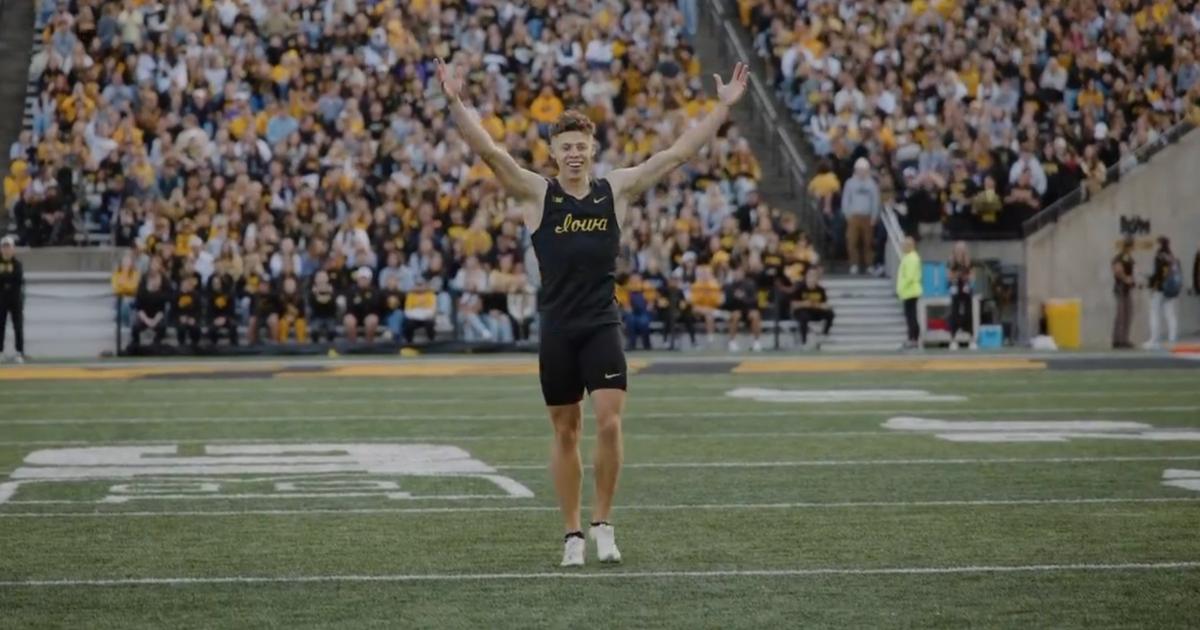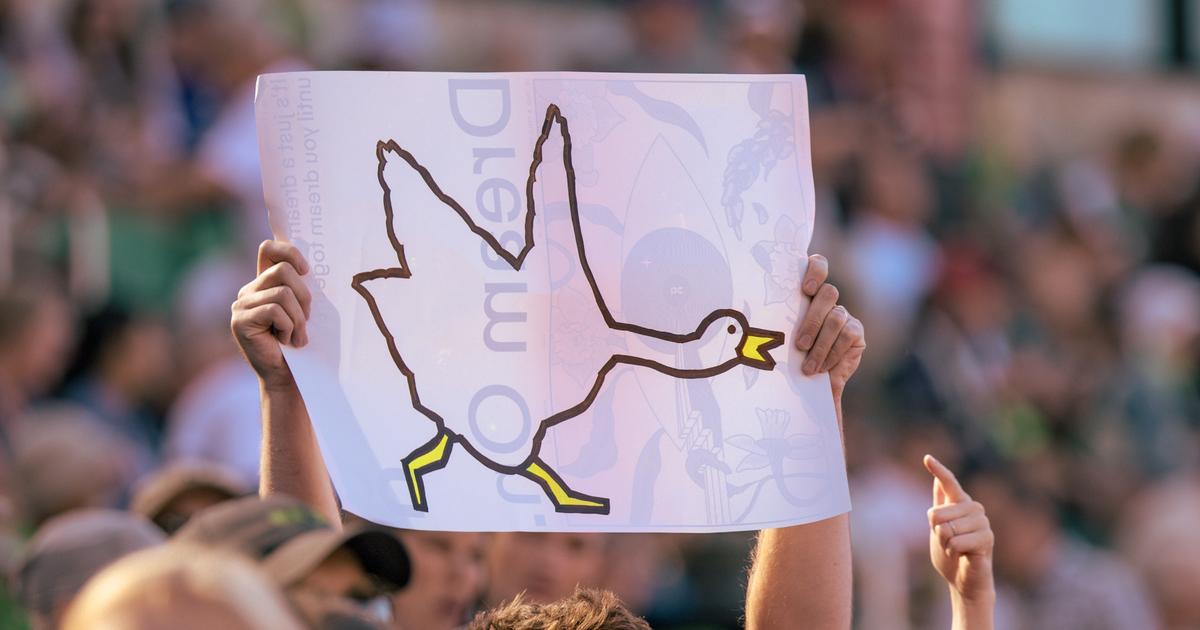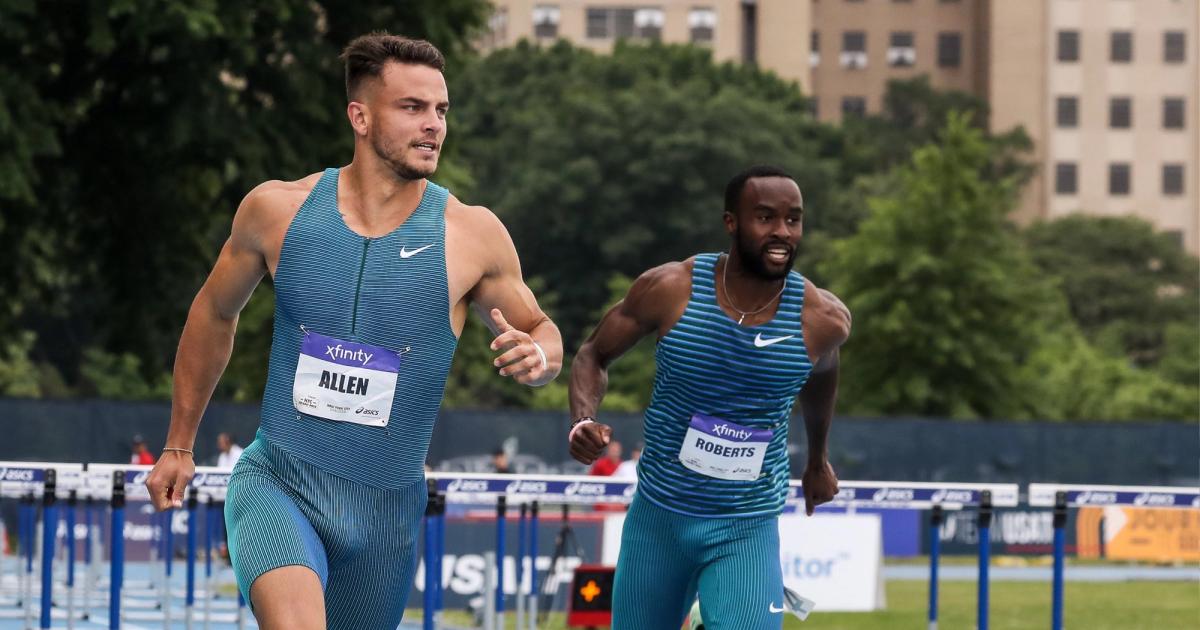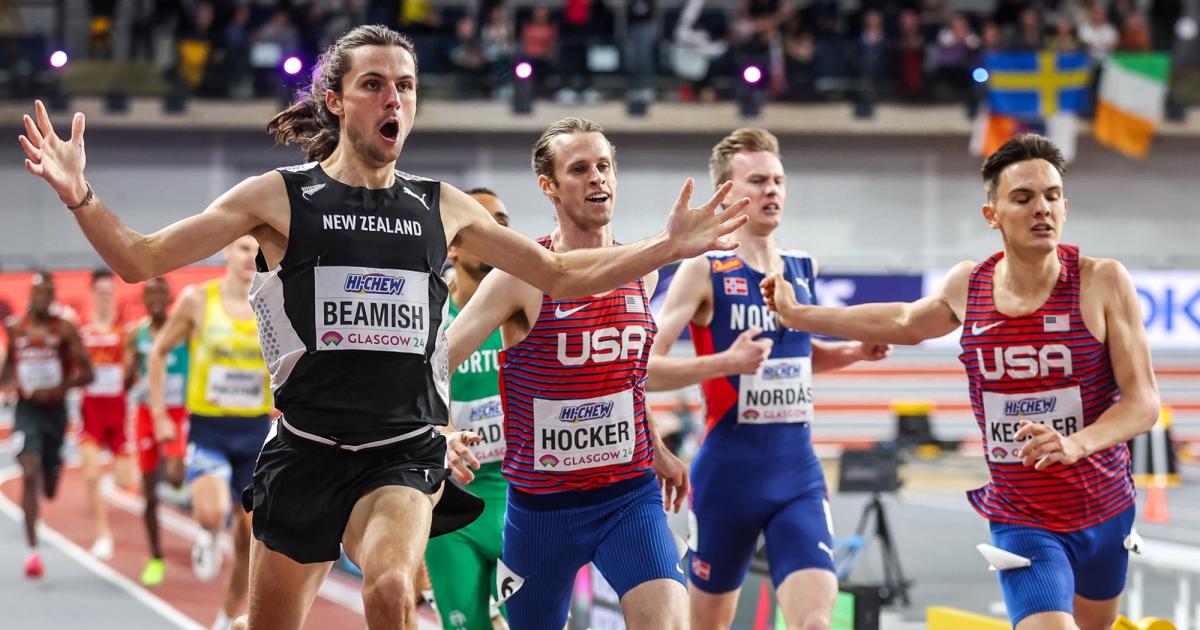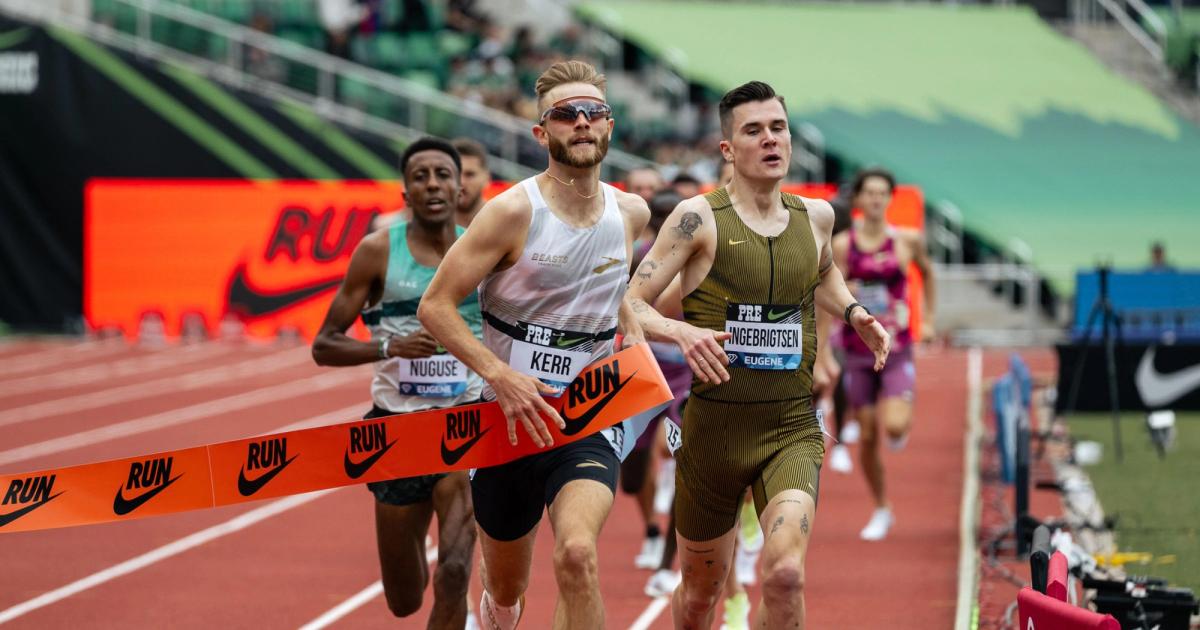By Paul Snyder
October 30, 2024
We try to come up with our own hot takes here at the Lap Count, but every once in a while we see a post containing such a good, and seemingly actionable suggestion, that we can’t help but jump on someone else’s bandwagon.
Victoria Jackson, sports historian, Arizona State University associate professor, and NCAA 10,000m champion to boot, tweeted the following:
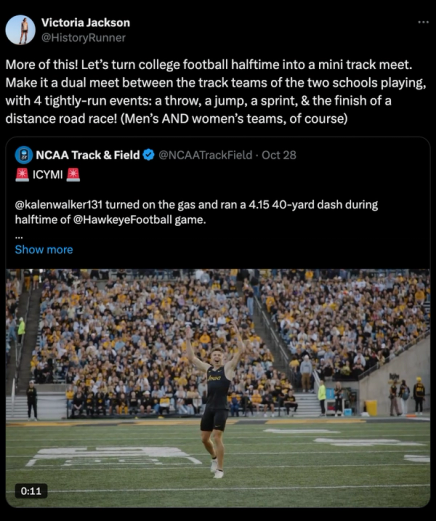
@IowaXC_TF on X
Yeah. Hell yeah. This is a great suggestion, and it presents a fun problem to solve: what’s the best way to package the entire sport of track and field into a less-than-20-minute window, at a likely track-less facility, with a large but uninformed and possibly drunken audience?
To start, this is ultimately a halftime show. Marching bands and dance teams are cool, but they don’t let you extend the biggest team rivalries beyond the game itself. Award one point per team, per event-level win, per gender. The overall winner is whichever squad earns the most points. All of a sudden, the third-best jumper on the fifth best team in the SEC has tens of thousands of fans screaming their name.
The throws are the easiest to plop down in the middle of a football field – we’ll go with the shot put, since it takes up the least space, and is a very straightforward display of strength and technique. Bonus points if we can get an interstitial video up on the Jumbotron of some of the football team’s linemen attempting to throw the shot for the first time, just to showcase how impressive throwers are, even compared to other massively strong athletes.
The jumps are a bit trickier. We need to keep things moving along quickly and we need to go with an event that wows visually even if the marks aren’t top-tier (remember, there aren’t runways in most of these stadiums). Enter: the pole vault showdown. Each team trots out four vaulters: two men, two women. The two bars are set at easily clearable heights to start. Each athlete gets one attempt to go over. For every clearance, a team earns one check mark. This is round one. The bar is raised a bit for round two and maybe one athlete fails to clear it on their sole attempt – they are not eliminated but they don’t earn a point. The third and final height is meant to be a challenge for these athletes. Tally up the check mark at the end, and you get your winning teams for this event. Put the bar and pads near the uprights, so fans can appreciate that the vaulters are launching themselves way over the height of the crossbar.
For the distance event, ending in the stadium is a nice touch, and having the rest of the race contained to a filmable course is key, so the proceedings can be displayed on the Jumbotron while the other events are taking place. The distance doesn’t really matter. For a 20-minute block, a 5K feels too long. Choosing a basically random distance (2.3K, or whatever a loop of some adjacent parking lot is) takes the emphasis off time and since nobody knows how to race a distance they’ve never raced before, increases the odds of a crowd-pleasing sprint finish. Score it like a cross country meet, with one overall team point on the line for men and one for women.
For sprints, why not go big and do a mixed gender shuttle relay the entire length of the field? The ol’ 4 x 100-yard dash. This obviously needs to be the final event, so let’s run this very shortly after the distance-y event concludes. It’ll take 40 seconds or so, so maybe we even have the football teams looming in the tunnels, ready to take the field again, watching on the Jumbotron as their athletics department peers go to battle and either incite the roar of the crowd further, or dampen things entirely for the home team. That’s some top-tier sports entertainment, folks.
While yes, purists might view this concept as “reducing the beautiful sport of track and field to a glorified sideshow,” you really should view it as “promoting the sport in an interesting way to a passionate new audience.” And remember – football games famously take place in the fall, when there’s not exactly a lot of track and field on the calendar. Swap out one testing day on the schedule for the sprinters, jumpers, and throwers for an exhibition, and all of a sudden the doldrums of non-cross-country fall training just got a lot spicier. Finish the day by handing out copies of the home team’s indoor track and field schedule, and even if a few hundred of those fans remember to pick up a ticket or two to a track meet during a basketball bye week, the field house will be a lot more crowded come January.

Paul Snyder
Paul Snyder is the 2009 UIL District 26-5A boys 1600m runner-up. You can follow him on Bluesky @snuder.bsky.social.
